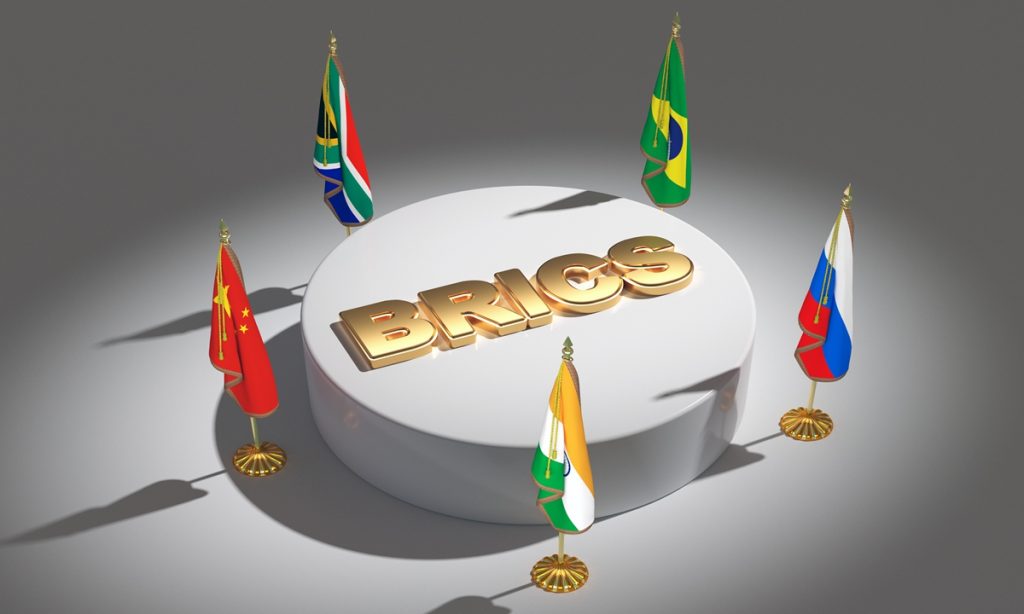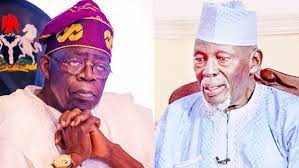The acronym BRICS was coined in 2001 by Jim O’Neill, an economist at Goldman Sachs, to describe four rapidly growing emerging economies: Brazil, Russia, India, and China. O’Neill predicted that these countries would become major economic powers by 2050, and he urged investors to consider them as investment opportunities.
The BRICS countries began meeting informally in 2006, and they held their first formal summit in 2009. South Africa was added to the group in 2010, and the acronym was changed to BRICS.
The BRICS countries have a combined GDP of over $25 trillion, and they account for over 40% of the world’s population. They are also major players in global trade and investment.
The BRICS countries have cooperated on a number of initiatives, including the establishment of the New Development Bank and the Contingent Reserve Arrangement. They have also coordinated their positions on a number of international issues, such as climate change and trade reform.
The BRICS countries have faced a number of challenges in recent years, including slower economic growth and rising political tensions. However, they remain an important force in the global economy and in international affairs.
Here is a timeline of some key events in the history of BRICS
- 2001: Jim O’Neill coins the term “BRIC” in a report for Goldman Sachs.
- 2006: Foreign ministers from Brazil, Russia, India, and China meet informally for the first time.
- 2009: The BRICS countries hold their first formal summit in Yekaterinburg, Russia.
- 2010: South Africa is added to the BRICS group.
- 2011: The BRICS countries establish the New Development Bank.
- 2014: The BRICS countries launch the Contingent Reserve Arrangement.
- 2023: Saudi Arabia, Iran, Ethiopia, the United Arab Emirates, Egypt, and Argentina are invited to join BRICS.
The BRICS countries are an important force in the global economy and in international affairs. They are expected to continue to play a major role in the global economy in the years to come.
Objectives of BRICS
- To strengthen economic cooperation between member countries
- To promote international trade and investment
- To coordinate on global economic and financial issues
- To reform the international financial system
- To increase the voice and representation of developing countries in global institutions
- To promote sustainable development and inclusive growth
- To combat poverty and inequality
- To strengthen peace and security
In addition to these general objectives, the BRICS nations also cooperate on specific projects and initiatives, such as the New Development Bank, the BRICS Contingency Reserve Arrangement, and the BRICS Business Council.
The BRICS nations represent a significant portion of the global economy, and their cooperation has the potential to have a major impact on global economic and political affairs.
BRICS nations are working to achieve their objectives
- The New Development Bank (NDB) is a multilateral development bank established by the BRICS nations in 2014. The NDB provides financing for sustainable infrastructure and development projects in BRICS countries and other developing countries.
- The BRICS Contingency Reserve Arrangement (CRA) is a $100 billion emergency fund established by the BRICS nations in 2014. The CRA is designed to provide short-term liquidity support to BRICS countries in the event of a financial crisis.
- The BRICS Business Council is a forum for businesses from BRICS countries to network and collaborate. The BRICS Business Council works to promote trade and investment between BRICS countries.
The BRICS nations are still a relatively new grouping, but they have already made significant progress in achieving their objectives. The BRICS nations are playing an increasingly important role in the global economy and political affairs.
Key aspects of BRICS
- Economic growth: The BRICS countries are some of the fastest-growing economies in the world. In 2021, the combined GDP of the BRICS was over $25 trillion, accounting for over 25% of global GDP.
- Emerging markets: The BRICS countries are all emerging markets, meaning that they have rapidly developing economies but are not yet fully industrialized. This makes them attractive destinations for foreign investment.
- Diversity: The BRICS countries are geographically and culturally diverse. They represent a wide range of income levels, development stages, and political systems.
- Geopolitical influence: The BRICS countries are a growing force in global politics. They have been working to increase their influence in international organizations and to promote their own interests on the world stage.
In addition to these key aspects, the BRICS countries have also identified a number of priority areas for cooperation, including:
- Trade and investment: The BRICS countries are committed to promoting trade and investment among themselves. They have established a number of mechanisms to facilitate trade, such as the New Development Bank and the BRICS Chamber of Commerce.
- Financial cooperation: The BRICS countries are also working to strengthen financial cooperation among themselves. They have established the Contingent Reserve Arrangement (CRA), which provides mutual financial support to member countries in times of need.
- Sustainable development: The BRICS countries are committed to sustainable development. They have worked together to develop a number of initiatives in this area, such as the BRICS Green Fund.
- Global governance: The BRICS countries are seeking to reform the global governance system to make it more inclusive and representative of the interests of developing countries. They have called for reforms to the IMF, World Bank, and UN Security Council.
The BRICS countries have made significant progress in cooperation on these and other areas. However, there are still some challenges that need to be addressed, such as the need to improve coordination among member countries and to increase the visibility of the BRICS on the world stage.
Overall, the BRICS are an important emerging power group with the potential to play a significant role in shaping the global order in the 21st century.
Global governance reform
Global governance reform is the process of adapting the existing system of international institutions and rules to better address the challenges of the 21st century. This includes issues such as climate change, pandemics, economic inequality, and technological disruption.
ALSO READ: Why Is The Crypto Market Down Today?
The current global governance system was largely established after World War II, and it is increasingly seen as inadequate to meet the needs of a more interconnected and complex world. For example, the United Nations Security Council has been unable to prevent or resolve many major conflicts, and the Bretton Woods institutions (the World Bank and the International Monetary Fund) have been criticized for their focus on austerity and their lack of representation for developing countries.
There are a number of different proposals for how to reform global governance. Some of the most common include:
- Reforming existing institutions. This could involve making the UN Security Council more representative, giving developing countries more voting power in the Bretton Woods institutions, or creating new institutions to address specific challenges, such as climate change or pandemics.
- Creating new networks and partnerships. This could involve working with non-state actors, such as businesses, civil society organizations, and academia, or creating new regional and global organizations to address specific issues.
- Strengthening international law. This could involve developing new international treaties or norms, or making it easier to enforce existing rules.
Reforming global governance is a complex and challenging task, but it is essential if we are to address the challenges of the 21st century effectively.
Here are some specific examples of global governance reform initiatives that are currently underway:
- The UN is currently engaged in a process of “reimagining global governance,” which is aimed at developing a more inclusive, effective, and accountable system of international cooperation.
- The G20 has been working to reform the global financial system in response to the 2008 financial crisis.
- The World Health Organization is working to strengthen global health governance in order to better prevent and respond to pandemics.
- The Paris Agreement on climate change is a new international treaty that aims to reduce greenhouse gas emissions and limit global warming to well below 2 degrees Celsius.
These are just a few examples of the many different initiatives that are underway to reform global governance. It is still too early to say how successful these initiatives will be, but they reflect the growing recognition that the current system of global governance is in need of reform.
Closure of Goldman Sachs’ BRICS investment fund
Goldman Sachs closed its BRICS investment fund in October 2015, merging it with a broader emerging-market fund. The fund had been underperforming for years, due to a combination of factors including economic slowdowns in Brazil, Russia, India, and China; falling commodity prices; and weak global growth.
The closure of the BRICS fund was a sign of the changing investment landscape. When Goldman Sachs launched the fund in 2006, the BRICS countries were seen as the future of the global economy. They were all large emerging markets with rapidly growing economies and populations. However, in recent years, their growth has slowed and they have faced a number of challenges, including political instability, corruption, and aging populations.
As a result, investors have become more cautious about investing in the BRICS countries. Goldman Sachs’ decision to close its BRICS fund was a reflection of this trend.
Here are some of the factors that contributed to the closure of the Goldman Sachs BRICS investment fund:
- Economic slowdowns in Brazil, Russia, India, and China
- Falling commodity prices
- Weak global growth
- Political instability in some of the BRICS countries
- Corruption in some of the BRICS countries
- Aging populations in some of the BRICS countries
The closure of the BRICS fund is a reminder that even the most promising investment theses can change over time. Investors should always do their own research and carefully consider the risks involved before investing in any asset class.
Unified digital currency initiative by BRICS nations
The BRICS nations (Brazil, Russia, India, China, and South Africa) have been discussing the possibility of a unified digital currency for several years. In 2023, the discussions have gained momentum, with some experts suggesting that the BRICS Bank could issue a digital currency for the economic bloc.
There are several reasons why the BRICS nations might be interested in a unified digital currency. First, it would reduce their reliance on the US dollar, which is currently the dominant global currency. This would make the BRICS nations more resilient to economic shocks and give them more control over their own economies.
Second, a unified digital currency could boost trade and investment among the BRICS nations. It would make it easier and cheaper for businesses and individuals to make payments across borders.
Third, a unified digital currency could help the BRICS nations to promote their own financial technologies and systems. This would reduce their dependence on Western financial institutions.
However, there are also some challenges to developing and implementing a unified digital currency. One challenge is that the BRICS nations have different economic systems and levels of technological development. This could make it difficult to agree on a common design for the currency and to ensure that it is implemented effectively in all five countries.
Another challenge is that the BRICS nations would need to address the regulatory and supervisory challenges associated with digital currencies. They would also need to build public trust in the new currency.
Overall, the idea of a unified digital currency for the BRICS nations is gaining traction. However, it is still too early to say whether or not it will become a reality.
It is important to note that the BRICS nations have not yet made any official announcements about a unified digital currency. The discussions are still ongoing, and it remains to be seen whether or not the BRICS Bank will issue a digital currency.
In Conclusion:
The concept of a unified digital currency for the BRICS nations holds great potential, but it also presents significant challenges and uncertainties. While the benefits of such a currency are clear, including increased trade efficiency and reduced dependence on the US dollar, there are still many hurdles to overcome. The BRICS nations must navigate complex regulatory frameworks, address concerns about privacy and security, and ensure widespread acceptance and adoption. Furthermore, they must carefully consider the potential impact on their respective economies and financial systems.
Do you find Six9ja useful? Click here to give us five stars rating!











